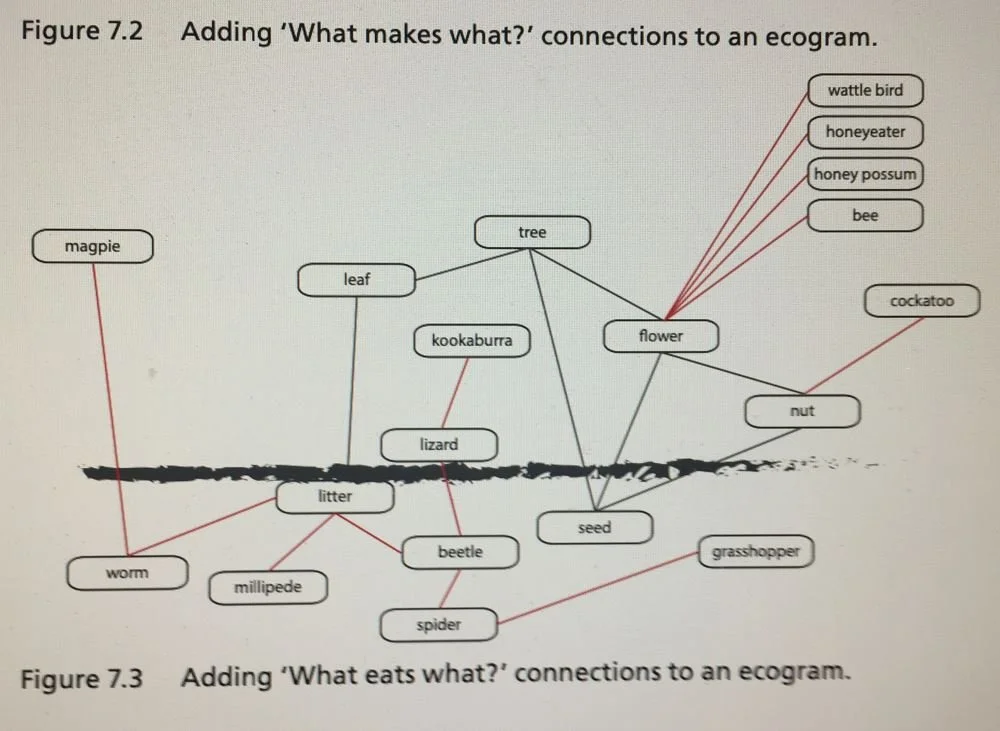In the Classroom
Keeping the Energy in Our Ecosystem
The important concept for students to gain is the dependence of one element in the ecogram on another, whether as a food provider, food consumer, or by providing shelter.
For an introduction to how scientists discovered how food energy is passed from one organism to another in an ecosystem:
https://www.youtube. com/watch?time_continue=659&v=hRGg5it5FMI
For ideas on understanding how food chains work, see: https://www.weareteachers.com/food-webs/
From Be a Bush Scientist, SPICE, UWA
Activity
Making connections:
1. Using information in Activity 14, students demonstrate the energy pathway in their ecogram. Using coloured tape, make connections between (i) who or what provides the food energy, and (ii) who eats it, as follows:
• What makes litter? Trees drop their leaves, so connect trees with litter.
• What makes the trees? The seeds in the nuts, pods, cones, and fruit. Connect seed pods with tree.
• What makes the seeds? Flowers, after being pollinated by a pollinator (insect, bird, honey possum). Connect birds/insects with flowers.
• Who eats the seeds in the nuts and cones? Birds. Connect a cockatoo with the nuts.
• What do herbivore eat? Connect herbivorous invertebrates to leaves.
• What do carnivores eat? Connect a carnivorous invertebrate (or a lizard) to another invertebrate in the litter.
2. Photograph the ecogram.
See Connected Classrooms Activity: Working with the Ecogram, for a range of relevant projects.

